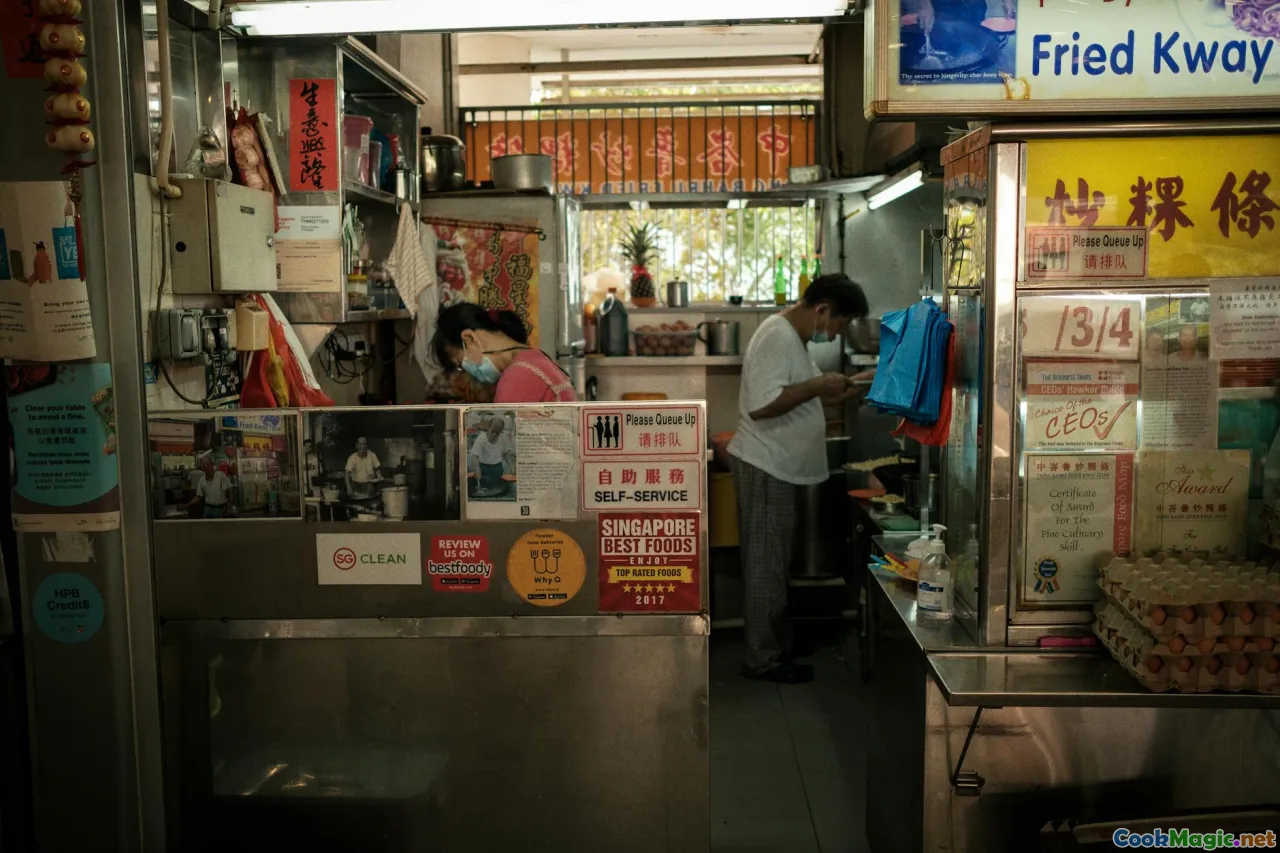A Journey Through Singaporean Food Markets
7 min read Discover the vibrant world of Singaporean food markets, where tradition, flavor, and culture intertwine in every stall and dish. April 25, 2025 00:55
A Journey Through Singaporean Food Markets
Singapore, often dubbed the Lion City, is a bustling tapestry of cultures, colors, and flavors. At the heart of its vibrant identity lie its legendary food markets—dynamic hubs where tradition meets innovation, and every stall tells a story. For the uninitiated, stepping into a Singaporean food market is akin to entering a sensory wonderland; for the seasoned foodie, it’s a pilgrimage to discover authentic tastes that have been passed down through generations.
The Soul of Singapore: Food Markets as Cultural Melting Pots
Singaporean food markets, or hawker centers, are more than just places to eat—they are living museums of cultural history. They echo the multicultural roots of the nation, blending Chinese, Malay, Indian, Peranakan, and Western influences into a harmonious culinary symphony.
From the bustling streets of Chinatown to the eclectic Tekka Market in Little India, each market is a microcosm of Singapore’s diverse communities. Here, generations of hawkers have perfected recipes that embody their heritage, and their stories are woven into every fragrant dish.
The Evolution of a Culinary Tradition
Historically, Singapore’s strategic location as a trading port attracted traders, settlers, and travelers from around the world. This melting pot of cultures brought with it an array of ingredients, cooking techniques, and food philosophies. Over time, these elements fused into a unique Singaporean cuisine—an amalgamation of flavors that’s both comforting and exhilarating.
Hawker stalls, once simple roadside setups, evolved into organized food courts and iconic markets, making gourmet-quality street food accessible to all. Despite modernization, the essence of these markets remains rooted in community, tradition, and the pursuit of authentic taste.
Sensory Experience: A Feast for the Senses
Walking through a Singaporean food market is an immersive experience. The air is thick with the aroma of freshly grilled satays, simmering laksa broth, and frying tempura. The vibrant colors of tropical fruits, spices, and freshly prepared dishes create a visual feast.
Imagine the sizzle of chili crab sauce coating succulent crabs, the fragrant allure of pandan and coconut in kueh-kueh, and the comforting warmth of a bowl of bak kut teh. The textures range from crispy and crunchy to tender and melt-in-your-mouth, each bite a testament to the skill and passion of the hawkers.
Iconic Markets to Explore
Chinatown Food Street
Nestled amidst historic shophouses, Chinatown Food Street is a lively promenade of culinary delights. Here, you can indulge in char siu (barbecued pork), dim sum, and Hainanese chicken rice—all served with a side of cultural storytelling.
Tekka Market
Located in Little India, Tekka Market is a sensory overload of spices, fresh produce, and Indian delicacies. From fragrant biryanis to sweet jalebi, this market showcases the Indian influence on Singaporean cuisine.
Maxwell Food Centre
A favorite among locals and tourists alike, Maxwell Food Centre offers classics like Tian Tian Hainanese Chicken Rice, where simplicity meets perfection. The hustle and bustle in this market encapsulate the true spirit of Singapore’s street food scene.
Lau Pa Sat
Famous for its Victorian-era architecture and satay street, Lau Pa Sat transforms into a night market after sunset. It’s an ideal spot to enjoy satay skewers grilled over charcoal, accompanied by cold Tiger beers and lively chatter.
Personal Encounters and Stories
During my visits, I’ve encountered hawkers who have dedicated their lives to their craft. Mr. Wong, who has been selling his famous char kway teow for over 40 years at Chinatown, shared stories of how the recipe has been handed down through his family. His wok, seasoned over decades, releases a smoky aroma that beckons crowds.
In Tekka Market, a Malay vendor introduced me to a steaming plate of nasi lemak, explaining how coconut milk, pandan leaves, and sambal come together in perfect harmony. These personal interactions deepen the appreciation for the culinary heritage behind every dish.
The Modern Twist: Innovation Meets Tradition
While tradition remains at the core, many hawkers and chefs are embracing innovation. Fusion dishes like laksa pasta or durian ice cream reflect Singapore’s forward-looking culinary scene. Modern food courts incorporate sustainable practices, healthier options, and even Michelin-starred street food experiences, elevating the humble hawker to global acclaim.
Why Food Markets Matter
Singapore’s food markets are more than gastronomic hotspots—they are communal spaces where stories are shared, identities affirmed, and traditions preserved. They foster a sense of belonging and pride, reminding us that food is a universal language that unites people.
Conclusion: An Inviting Invitation
A journey through Singaporean food markets is a voyage into the heart of a nation that celebrates diversity through its cuisine. Every stall, every dish, and every interaction offers a glimpse into the soul of Singapore—resilient, vibrant, and deeply flavorful. Whether you’re a seasoned foodie or a curious traveler, stepping into these markets promises an unforgettable experience filled with taste, culture, and stories waiting to be discovered.
So, pack your senses and prepare to indulge—Singapore’s food markets await with open arms and a bounty of flavors that will leave you craving more."









